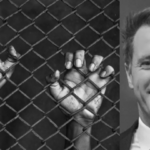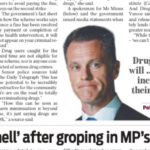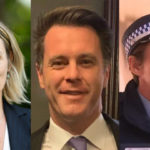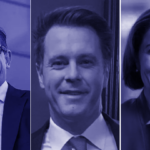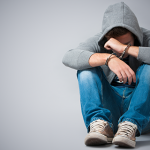NSW Government Targets First Nations Youth Through Toughened Bail Regime
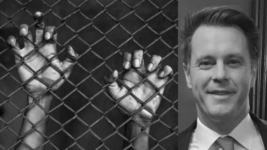
“Just recently, the Minns government announced its intention to toughen bail laws in a targeted response to incriminate Aboriginal youth,” Wiradjuri Badu Island academic Lynda-June Coe asserted as she addressed the 31 March Gadigal-Sydney weekly rally calling for an end to the Gaza genocide.
And while others may not have put this quite as succinctly, it has been implied amongst the general outrage expressed in relation to NSW premier Chris Minns and his government having announced its $26.2 million “early intervention and prevention” youth crime package on 12 March.
But the tough-on-youth-crime sell had all the hallmarks of a solution for a manufactured crisis, as no one was aware of any youth crime wave sweeping regional NSW that warranted any tightening of youth bail and the BOCSAR report to justify it wasn’t released until two days after the new laws.
The Aboriginal Legal Service NSW/ACT condemned the move, with chief executive Karly Warner, stating on the day that it is “a betrayal of Closing the Gap” and “the children of NSW”, and she further underscored that “the short-term political stunt” will make “communities more dangerous”.
And Warner cited Queensland as an example of this failed approach, which hints at the fact that this reform that drastically affects First Nations kids, has recently been rolled out in other Australian jurisdictions, despite the widely understood reasons for curbing the incarceration of children.
Gaoling everyone to stop crime
The 12 March early intervention and prevention package press release outlined that data shows “crime rates in regional NSW remain higher than in metro areas”, and offenders are now posting about crime, which “may encourage others, specifically young people, to engage in similar” acts.
“It is clear the current status quo is not working for young people who are reoffending and being caught up in this cycle”, NSW Labor added. So, its solution is to ensure reoffenders be sent to gaol regardless, while those boasting about their crimes online should spend more time in there.
The Bail and Crimes Amendment Bill 2024 passed on 22 March. It inserted section 22C into the Bail Act 2013 (NSW), which temporarily prohibits bail for youths aged 14 to 17, who commit serious motor theft or break and enter, while on bail for the same offences. This law applies for 12 months.
The bill also inserted a new offence under section 154K of the Crimes Act 1900 (NSW), which involves committing serious motor theft or break and enter and posting about it. This performance crime carries a maximum sentence of two years longer than the same offence does without posting.
The corresponding figures
As the NSW Bureau of Crime Statistics and Research (BOCSAR) report the Minns government has predicated the tough-on-youth crime package on states, “rates of violent and property crime are considerably higher in regional NSW”, despite an overhaul drop in crime over the last two decades.
“In regional NSW, in 2023, most major offences remained lower than in 2019,” the BOCSAR researchers note. “This is true of: break and enter dwelling, break and enter non-dwelling, steal from motor vehicle, steal from dwelling, steal from person, other theft, sexual touching and robbery.”
However, whilst that is true, four major offences are spiking: motor vehicle theft, nondomestic assault, sexual assault and domestic violence assault. And the report asserts that the rise is motor theft is due to young people, as is 62 percent of the rise in nondomestic assault.
So, as less than half of the regional crime wave is being attributed to youth, and the majority of that youth crime is property-related, the Minns government is set to throw more teens in prison. But as for the spike in crime usually perpetrated by adult men upon women, it’s being overlooked.
Indeed, break and enter is on a downward spiral, yet Minns is specifically targeting serious incidents of that crime in regard to youth, and he’s obviously homing in on imprisoning a lot of teenagers over the next 12 months, which will then evidently solve the regional crime issue.
A targeted approach
NSW Labor’s tough-on-youth-crime package is investing $12.9 million into a number of statewide regional crime prevention initiatives, including the expansion of youth action meetings and the Safe Aboriginal Youth Patrol Program, along with further funding for justice reinvestment.
However, there’s also a “placed-based” response focused on Moree, with $13.4 million being invested into the area. This includes additional judicial resources, including Legal Aid, additional funding to the DPP office and NSW police for six months, as well as to the Aboriginal Legal Service.
Funding, $8.75 million, has been set aside for new bail accommodation, which sounds like a remand centre for kids, while “young Aboriginal people would be linked to Indigenous organisations, elders, cultural and family supports from their own communities”, which sounds like after they’re inside.
“Continuing NSW Police Force operations… to meet community needs” is also part of the package, with a focus on prevention for at-risk kids. And the local council is also set to put on some afterhours activities, such as at the local pool, at the arts and sports centre and the police youth club.
The ABC reported on the “spike in youth crime” in Moree on 25 March making certain that while “youth crime is hardly unique to Moree”, what is distinctive about the town’s “extremely sensitive issue” is that “almost 22 percent of its 9,000 residents are Indigenous” people.
So, following on from that logic, the changes that make it easier for magistrates to keep kids in prison are being applied in an area where a large number of the youth set to be affected by them are First Nations kids.
Neocolonial trends
But NSW’s tightening of youth bail laws is no anomaly, in fact, it’s a growing trend in Australian jurisdictions.
The Palaszczuk government went ballistic on youth last year, as it created “serious repeat offenders” who face longer sentences, it expanded offences where the presumption is against bail, and it created a youth breach of bail offence, which required suspending the Human Rights Act 2019 (Qld).
The Miles government is proceeding with the building of a new youth detention facility at Woodford, close by the adult prison, which was announced by former premier Anastasia Palaszczuk, who also gave the nod to another child prison in Wacol, near Cairns, which is under construction.
In mid-2022, the Northern Territory children’s commissioner released data outlining that a 200 percent rise in youth prison numbers since May 2020, were due to the Gunner ministry having enacted stricter youth bail laws in May 2021.
And the notorious Don Dale facility, that sparked the current focus on the abuse of youth in child prisons in 2016, and then led to a royal commission, a heightened campaign around raising the age of criminal responsibility and feigned OPCAT implementation efforts, continues to imprison children.
Meanwhile, there are calls for a crackdown on youth bail laws in Victoria, while in WA, a class action has been launched against the only youth prison, and the government is currently building a new heightened security wing at Banksia Hill, so it no longer has to detain some kids in an adult facility.
The reason why these laws are said to target Aboriginal and Torres Strait Islander kids, rather than non-Indigenous youth, is that the criminal justice system disproportionately targets First Nations children in a systemic way, from on-the-beat policing to the stark numbers in youth facilities.
BOCSAR figures outline that in December 2023, 63 percent of youth detainees in NSW were Indigenous, yet they only account for about 4.5 percent of the overall youth population in this state. And while these figures standout, they pale in comparison to those from other jurisdictions.
In the Northern Territory, First Nations youth regularly account for over 90 percent of juvenile detainees. In January, 90 percent of kids in NT facilities were Indigenous. Yet, Aboriginal people account for just over 30 percent of that jurisdiction’s populace.
Of Queensland’s imprisoned youth in mid-2022, 62 percent were Aboriginal kids, despite an overall state representation of 29 percent of people, while in WA, First Nations youth make up 6 percent of the overall population, whilst in June 2022, 74 percent of kids in Banksia Hill were Indigenous.
Pushback only beginning
To give some idea of the other political sentiment floating around in NSW parliament regarding the local crackdown, Liberal MLC Susan Carter suggested on 21 March, that 12 months wasn’t long enough, and added the measures coming for Moree won’t be operational before the law sunsets.
Minns, however, was clear he’s all about being tough on youth crime, as he stressed during his crackdown announcement that his government has also determined not to raise the age of criminal responsibility, rather Labor is keeping it open to imprison children aged 10, 11, 12 and 13 years old.
And this month, in what appears to be a compensatory move due to putting more of its youth in gaol, the premier paid a visit to Moree to launch an NRL program to address youth crime, which will offer one-on-one mentorships with football stars to address the underlying causes of crime.
But just because the laws have passed doesn’t mean civil society is settling in to the heightened focus on locking up First Nations youth, with NSW Greens MLC Sue Higginson having just called out the premier on his football PR stunt, whilst the Aboriginal Legal Service has vowed to dig in its heels.
“We are drawing a line in the sand,” warned ALS CEO Karly Warner, following the passing of the law. “We cannot accept an Australia that puts children in gaol instead of evidence-based policy that actually makes communities safer.”
“Time will show that these laws will increase crime and make communities more dangerous,” the lawyer made clear. “This is the beginning, not the end, of our advocacy.”



